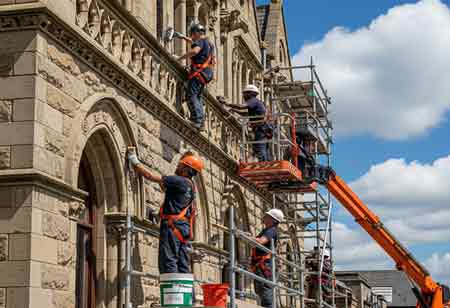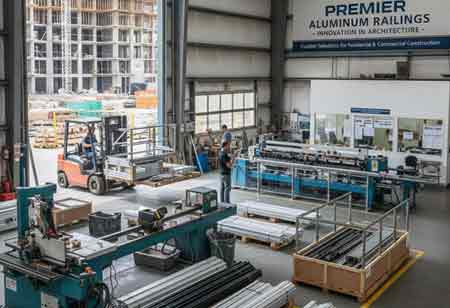Thank you for Subscribing to Construction Business Review Weekly Brief
Specials
- Apartment and Condominium Contractors Canada
- Decking Canada
- Architectural Glass Europe
- MEP APAC
- Construction Saudi Arabia
- German Apartment and Condominium Contractors
- Construction Law APAC
- Outdoor Construction
- Foundation Construction Canada
- MEP Canada
- Kitchen and Bath
- Cold Storage Construction APAC
- Precast Concrete Europe
- Construction Staffing Europe
- Pre-Construction Services
- Flooring System APAC
- Scaffolding Canada
- Swimming Pool Construction Canada
- Construction Management Canada
- Cold Storage Construction Canada
- Flooring Systems Europe
- Residential Construction
- Concrete Canada
- Construction Cladding Europe
- Construction Cladding APAC
- Concretes, Aggregates and Construction Materials APAC
- Concretes, Aggregates and Construction Materials Europe
- Commercial Contractors Europe
- Commercial Contractors APAC
- Dummy
- Construction Insulation, Coating and Waterproofing
- Construction Management APAC
- Landscaping Canada
- Construction Coating Europe
- Construction Tech Startups Europe
- Insulation Services Europe
- Mechanical Contractor Canada
- Mould Remediation and Testing Europe
- Swimming Pool Construction APAC
- Building Sealing Solutions Europe
- Construction Engineering Services
- Mechanical Electrical and Plumbing
- Roofing Systems Europe
- Architectural Glass APAC
- Startups APAC
- Construction Forensic and Owners Representative
- Flooring System
- Waterproofing APAC
- Wall Systems
- Safety and Compliance Europe
- Construction Bidding and Auctions
- Modular and Prefab Construction
- Architectural Glass
- Construction MENA
- Construction Demolition and Recycling Europe
- Modular Construction Europe
- Construction Interiors
- Steel Building APAC
- HVAC
- Doors and windows
- Construction Latam
- Building Information Modeling APAC
- Sustainable Construction APAC
- Building Restoration and Maintenance
- Commercial Contractors
- Specialty Construction
- Construction Engineering Canada
- Construction Engineering MENA
- Modular Construction Canada
- Modular Construction APAC
- Roofing and Siding Systems
- Workforce Management and Staffing
- Roofing Systems APAC
- Construction Consulting
- Steel Building Europe
- Construction Demolition and Recycling APAC
- Safety and Compliance APAC
- Concretes, Aggregates and Construction Materials
- Construction Cladding
The Restoration Economy: Capitalizing on Aging Infrastructure and Innovation
The exterior restoration sector is experiencing growth due to aging buildings, urbanization, and climate change, driven by advancements in technology, sustainability, and specialization in maintenance and preservation.

By
Construction Business Review | Friday, June 20, 2025
Stay ahead of the industry with exclusive feature stories on the top companies, expert insights and the latest news delivered straight to your inbox. Subscribe today.
The exterior restoration sector within the broader construction industry is experiencing a period of growth and transformation. The fundamental driver for exterior restoration remains the vast inventory of existing buildings. In many mature economies, a significant portion of the building stock is several decades old, necessitating regular maintenance, repair, and often, extensive restoration to ensure structural integrity, aesthetic appeal, and functional performance. This need extends beyond simple upkeep; it encompasses complex issues like water ingress, material deterioration, energy inefficiency, and seismic vulnerability. While mature economies drive the market, rapid urbanization in developing economies is also a key contributor to its growth. As new constructions reach a certain age, they too will require ongoing maintenance and eventual restoration, highlighting the global nature of this market.
The rising incidence of extreme weather events also plays a critical role. Buildings need to be more resilient to withstand storms, floods, and other natural phenomena, leading to greater demand for robust waterproofing, facade repairs, and structural reinforcements. This not only drives investments in preventative maintenance but also underscores the market's adaptability and resilience in the face of such challenges, making it a reliable and sustainable investment.
Technological Advancements Revolutionizing Restoration
Technological innovation is significantly transforming the exterior restoration industry, driving improvements in efficiency, accuracy, and safety. Central to this evolution is the increasing adoption of digital technologies that enable more informed decision-making and streamlined processes. Building Information Modeling (BIM) and the use of digital twins are becoming essential tools in restoration planning and execution. These technologies enable the creation of detailed digital representations of existing structures, allowing for simulations of various restoration scenarios, early identification of potential issues, and optimized material use. Digital twins go a step further by incorporating real-time data on building performance, which supports predictive maintenance and enhances long-term restoration strategies.
Advancements in drone technology and robotics are also reshaping traditional inspection and repair methods. Unmanned Aerial Systems (UAS), also known as drones, equipped with high-resolution and thermal imaging capabilities, facilitate rapid and safe assessments of building exteriors, even in areas that are difficult or hazardous to access. These inspections help detect issues such as cracks, moisture intrusion, and material degradation without the need for extensive scaffolding. Additionally, robotic systems are being increasingly deployed for facade cleaning and precise repair tasks, further enhancing job site safety and operational efficiency.
Non-Destructive Testing and Evaluation (NDTE) techniques are another critical innovation, enabling professionals to assess subsurface conditions without invasive procedures. Technologies such as infrared cameras, electrical impedance meters, ground-penetrating radar, and covermeters provide valuable insights into the structural integrity and hidden conditions of building envelopes, allowing for accurate diagnostics and targeted restoration strategies.
The development and application of advanced materials are playing a pivotal role in the industry’s progress. Innovations such as self-healing coatings, next-generation sealants, and high-performance insulation materials offer greater durability, improved weather resistance, and enhanced energy efficiency. Additionally, the industry is increasingly prioritizing sustainability by incorporating recycled aggregates, bio-based coatings, and environmentally friendly concrete formulations that reduce the overall ecological footprint of restoration projects.
Sustainable Practices in Focus
Sustainability has evolved from a niche consideration into a foundational principle in exterior restoration projects, as the industry increasingly adopts environmentally responsible practices aimed at minimizing impact and enhancing long-term resilience. Central to this shift is the emphasis on resource efficiency and waste reduction, achieved through meticulous planning to limit material waste, the reuse and recycling of salvaged elements such as brick, stone, and metal, and the selection of materials with high recycled content. Energy performance upgrades represent another critical aspect, with restoration efforts frequently involving the installation of improved insulation, energy-efficient windows and doors, and the application of passive solar design strategies to reduce heating and cooling demands, thereby lowering operational costs and carbon emissions. Water conservation is also integral, with sustainable projects often incorporating rainwater harvesting systems for irrigation or non-potable use, as well as specifying low-flow fixtures in exterior plumbing. Furthermore, compliance with green building certifications such as LEED (Leadership in Energy and Environmental Design) is gaining importance, offering firms a competitive edge and underscoring their commitment to environmental stewardship.
Specialization and Expertise
The exterior restoration industry is a highly specialized field that requires comprehensive expertise in diverse building types, construction techniques, and material sciences. Within this domain, firms often focus on distinct areas of specialization to deliver precise and effective restoration solutions. One key area is historical preservation, which involves the careful restoration of heritage structures while maintaining their original character. This process demands thorough research, strict adherence to preservation guidelines, and the use of compatible materials and traditional techniques. Another specialization is facade cleaning and maintenance, which goes beyond major repairs to include routine upkeep. These services, employing methods such as advanced pressure washing and laser cleaning for delicate surfaces, are essential to prolonging a building’s lifespan. Waterproofing and building envelope solutions form another critical domain, focusing on preventing water infiltration through specialized treatments for roofs, walls, and foundations using high-performance membranes, sealants, and drainage systems. Additionally, structural repair and reinforcement are vital for ensuring safety and longevity, particularly in aging or seismically vulnerable buildings. This often involves intricate engineering interventions to address and strengthen structural deficiencies.
The exterior restoration sector is an evolving segment of the construction industry, responding to the critical need to preserve, protect, and enhance the built environment. With strong market drivers, continuous technological innovation, and a growing commitment to sustainability, firms in this space are poised for continued success and play a vital role in shaping the future of resilient and efficient buildings.





